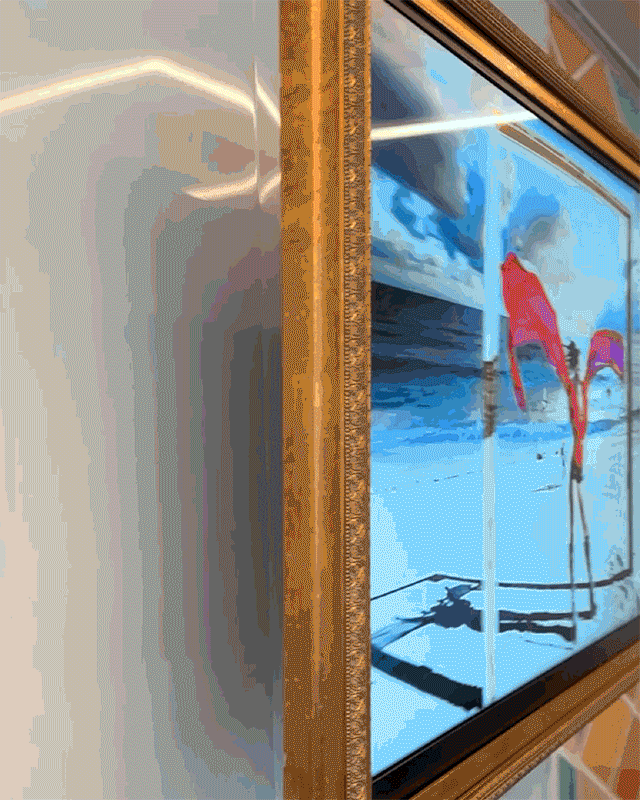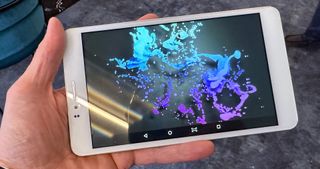I saw a 3D TV and it almost made me believe it could be a thing again
3D TV has an abysmal history, possibly matched only by 3D gaming (I see you Nintendo 3DS), but maybe it was the wrong technology at the wrong time. That’s certainly Magnetic3D’s hope as the company prepares to bring its glasses-free lenticular 3D televisions to consumers.
Lenticular technology is one of the oldest forms of 3D image generation, one that dates back to those 3D postcards that could take a 2D image of Mount Rushmore and show you seemingly different angles of it as you moved from side to side.
Magnetic3Dwho recently showed me a 55-inch glasses-free 3D TV uses a much more advanced version of the display technology that, as Tom Zerega, CEO and founder of Magnetic3D, and John Bracciante, the company’s COO, told me, is the typical vertical lenticular bands at a 45-degree angle and uses sub-pixels.
Seeing is believing
When I first saw the TV sitting on a pedestal at eye level, I didn’t see any 3D effect. That’s because I was viewing it from an extreme (more than 140 degrees) angle, but as I circled to the front of the screen, the 3D images took shape. I saw fish, abstracts, basketball players and a basketball that seemed to extend beyond the boundaries of the screen (this nice effect was achieved by using large black borders at the top and bottom of the image). In a word, it was impressive.
There were artifacts in the 4K, about 80lb 3D TV. There’s no eye tracking here (future models may have it), so as my eyes moved across the screen I could almost see the lenticular image degrade into disconnected bands of image. But this was rare and most of it held up pretty well.
Bracciante told me that the best viewing experience is between 2.5 and 4.5 meters from the screen.
Magnetic3D has been selling its specific brand of 3D TV for retailers and commercial use, but now hopes to inspire consumers to return to the 3D side. They’re marketing sets that run from 43 inches to 65 inches, the latter I think being the sweet spot for modern consumer UHD viewing.
They also hope to sell the sets for $10,000, on the low end, and about $20,000 at the 65-inch level (prices include a custom frame and some 3D content to stare at). I’m not sure if Zerega or Bracciante noticed that I was turning pale. The best TVs, think true high-end models, often start in the $2,000-to-$4,000 range. No one is charging $10,000 for a set.
We talked a bit about the history of 3D TV and how 15 years ago consumers showed an extreme lack of interest in buying sets that were marketed solely as 3D TVs, as opposed to TVs that offered 3D viewing capabilities, among other things .
Content, content, content
They didn’t argue when I said one of the big hurdles apart from the price would be satisfied. Few buy 8K TVs because there is no content. The explosion of 4K streaming content has undoubtedly contributed to the mass consumption of 4K TVs. Not only is there a lack of 3D content, the only way you can currently get the right kind of 3D content on Magnetic 3D’s set is via a USB stick. The company is working on an app.
That said, something Bracciante said stuck with me. People could use these sets to show off their NFTs (non-fungible tokens, which are often pieces of digital art linked to unique tokens that can be bought, sold, and traded). I don’t like NFTs and think they are part of a crypto bubble, but I know many who love them, own them and yes, even want to show them off.
If you look at Magnetic3D’s expensive 3D sets as display centers for digital artwork and NFTs you own, there might be something there. Granted, this is a niche market with money to spare (they bought NFTs after all), but it’s a way.
I don’t know if anyone will buy these sets, but the visuals are exciting and unusual and for some that might be enough.
Before I left, Zerega took a small tablet from his pocket and handed it to me. I stared at the 7-inch screen in amazement as purple blobs seemed to pop off the screen. It was one of the better glasses-free 3D wearable experiences I’ve ever had, and I’ve been eyeing 3D handheld technology for over a decade. Zerega said this little tablet was the company’s calling card and I have to admit I kind of get it.


